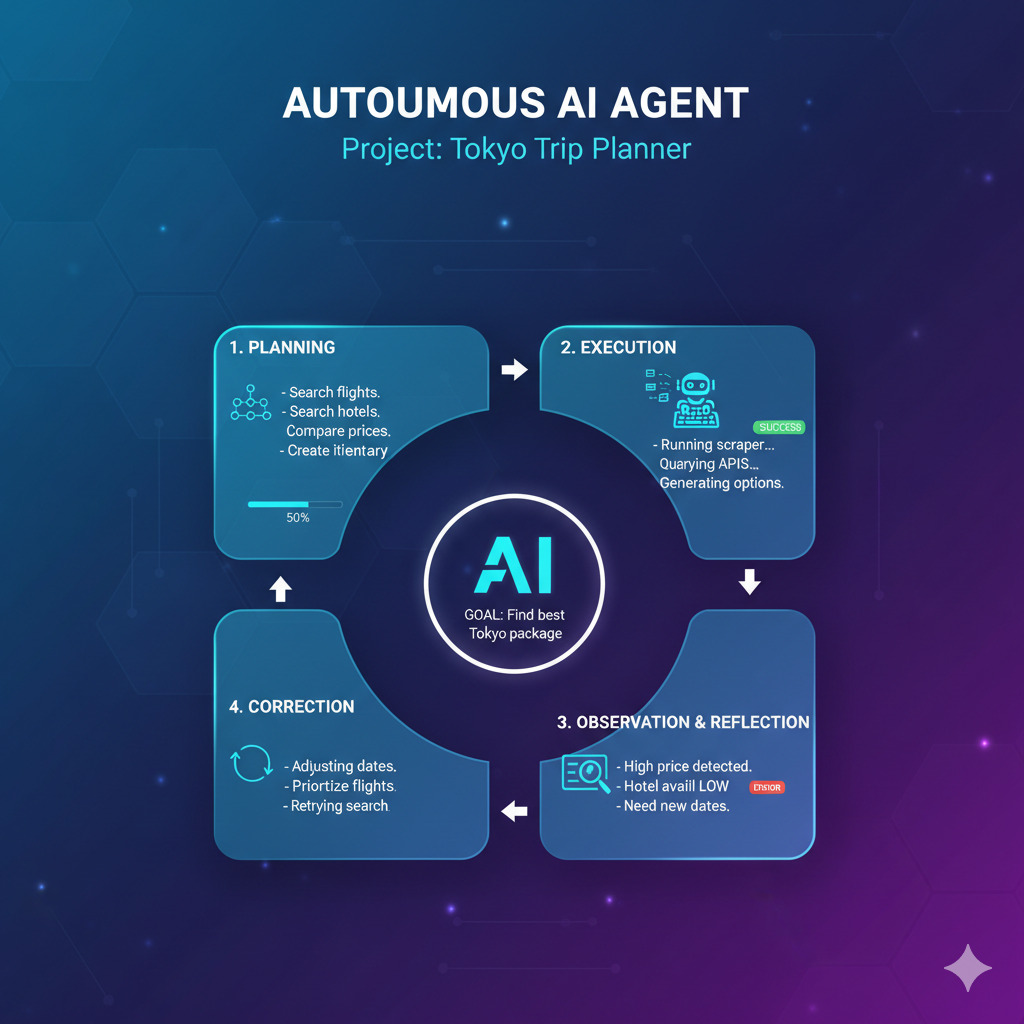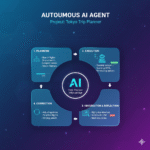Agentic AI
Why Agentic AI is the Next Revolution (and What it Means for Your Job)
The ChatGPT Era is Over: Enter the Autonomous AI Agent
For the last two years, Artificial Intelligence has been defined by the chatbot—a brilliant tool that answers questions, writes code, and drafts emails. But all of these tasks require one thing: you, the human, to prompt it, guide it, and tell it the next step.
That era is already ending. The next wave of AI isn’t an assistant; it’s an Autonomous Agent.
If your blog is about what’s running now in tech, you need to know about Agentic AI. It’s the biggest shift since Generative AI arrived, and it will fundamentally change how we work.
What Exactly is Agentic AI?
Imagine giving an AI a high-level goal, like a mission brief, and then walking away. Agentic AI is a system that can take that single prompt and break it down into tasks, execute them, learn from its failures, and try again—all without further human intervention.
It’s the difference between a self-driving car (Agentic AI) and a very smart GPS that just gives you turn-by-turn directions (a traditional chatbot).
A simple agent operates in a cycle:
- Planning: Receives a goal (e.g., “Find the best flight and hotel package for a trip to Tokyo next month.”) and creates a step-by-step plan.
- Execution: Performs the actions (opens travel sites, checks prices, runs comparisons).
- Observation & Reflection: Analyzes the results (Is the price too high? Did the website crash?) and figures out what went wrong.
- Correction: Updates the plan and tries a better approach.
This ability to self-correct is the key. An AI agent is not just a tool; it’s a self-managing project manager.
Where Are AI Agents “Running Now”?
This isn’t just futuristic theory; companies are already building these systems:
| Industry | Current Application of Agentic AI | The “Autonomous” Difference |
| Software Development | An agent receives a bug report and writes, tests, and deploys the fix without a developer opening the code. | It moves beyond just writing the code; it manages the entire engineering workflow. |
| Customer Service | A support agent automatically handles a complex refund request, communicating with the payment processor and the customer simultaneously. | It resolves multi-step issues instead of just answering the customer’s initial question. |
| Finance & Trading | An agent monitors market data 24/7, identifies a low-risk trading opportunity, and executes the trade. | It moves from data analysis to autonomous decision-making and action. |
| Data Analysis | An agent is given a company’s raw quarterly sales data and generates the executive summary, charts, and key performance insights. | It performs the entire research and reporting process, not just drafting sections of a report. |
The Big Question: What About Your Job?
The arrival of Agentic AI means that the most important skills will change. It’s not about competing with the agents; it’s about managing them.
- You won’t be replaced by an AI; you’ll be replaced by a person who uses AI Agents.
- The New Skill: Learning to write extremely clear, high-level goals and then evaluating the agent’s final output. Your value shifts from doing the steps to defining the mission.
- The Opportunity: AI agents are productivity multipliers. If you can deploy an agent to handle 80% of your administrative, research, or coding tasks, you can focus on the 20% that requires creativity, strategy, and human-level judgment.
The Current Stack Takeaway:
Start experimenting with the concept now. Find an agent framework (many are open-source) and give it a test task. The future isn’t just chatting with AI; it’s delegating entire projects to it. Get ready to be the conductor of an AI orchestra.
References & Further Reading
For those who want to dive deeper into the world of Autonomous AI Agents and the future of work: The official OpenAI Blog serves as the primary source for updates, research breakthroughs, and technical insights from the creators of the models driving the agentic shift. For a focus on enterprise implementation and best practices, Microsoft’s Azure Blog (Agent Factory Series) details the real-world development and design patterns for building agent systems at scale. Finally, for a high-level strategic analysis on the economic potential and organizational transformation driven by this new technology, review the comprehensive insights available from McKinsey & Company.




Leave a Reply
Want to join the discussion?Feel free to contribute!